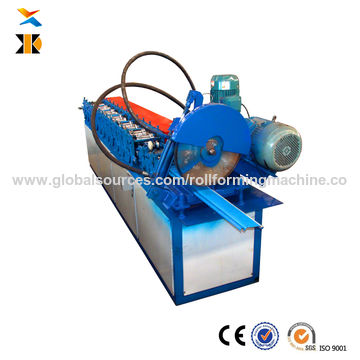What Is a Vacuum Emulsifier?
Vacuum emulsifier is an equipment used to mix and emulsify various products like cosmetic cream, shoe wax, and coating liquids. It is also used in petrochemical, printing and dyeing auxiliaries, paper, pesticide and fertilizers, plastic, rubber, and power electronics industries.
This machine is easy to clean and has no dead corners. It has a vacuum system that removes air from the mixture to prevent bubble formation during the process. All parts that come into contact with the product are made of stainless steel 316L.
High Shear Emulsifier
The high shear emulsifier mixer uses hydraulic and mechanical shear to achieve a thorough emulsification. It can be used to prepare a variety of products, such as mayonnaises, Vacuum emulsifier high quality body care creams and pharmaceutical and veterinary solutions. It also produces a more hygienic solution than traditional mills and homogenisers.
The machine draws in liquid-liquid and solid-liquid materials through its inlet connection and exposes them to the intense shear force generated at the rotor-stator interface. The material is then broken down into smaller particles and then re-assembled into new droplets, creating a homogenized disperse or emulsion product.
Using high shear mixing, manufacturers can often reduce surfactant levels in their products, resulting in significant cost savings in raw materials. The shear forces created by the mixer can also help to reduce particle size, enabling the formation of stable, long-lasting emulsions.
The High Shear Emulsifier can be paired with a range of systems to carry out dispersing, emulsifying and homogenizing operations. It has a stainless steel body and is suitable for use with food and pharmaceutical products. It is available in laboratory (3″ diameter rotor) and production sizes. A sanitary model is available for sensitive applications, with provisions for CIP/SIP cleaning and sterilization in place. The high shear emulsifier can also be fitted with a sifter to ensure that the mixture is free from lumps and other solid particles before it is exposed to the shear force.
Centrifugal Emulsifier
A centrifugal emulsifier is a device that uses a combination of agitation and centrifugal force to disperse a liquid mixture. Its design allows it to be used in a variety of applications, including food processing and pharmacology. This type of emulsifier is especially useful in combining ingredients that are sensitive to heat or temperature changes. It can also be used to emulsify difficult-to-handle materials, such as solids and gases.
In many cases, a chemical additive is needed to stabilize an emulsion. These chemicals are called emulsifiers, and they are found in foods, such as margarine, shortening, and salad dressing. They are also commonly used in cosmetics and pharmaceuticals. In addition to making food products more appetizing, emulsifiers also help keep them stable longer and increase their shelf life.
The emulsifier’s centrifugal force causes the aqueous and oily components to separate from one another. The aqueous liquid then flows through a series of openings that are separated by the oily liquid. The liquids are then discharged into an oil tank or reservoir. This process is known as de-emulsification, and it is a critical process in the petroleum industry.
This process can be applied to produce highly stable emulsions with high internal volume fractions of up to 97.2%. To achieve this, three different aqueous phases were used: water, inkjet printer ink, and low-melting agarose. The experimental conditions included different concentrations of the emulsifier, de-emulsification time in centrifuge, and centrifugal speed.
Hydraulic Emulsifier
An emulsifying mixer machine is an equipment for combining raw materials and creating a new product. It works under vacuum condition to make the process much easier and faster. It also helps in avoiding wastage of materials. The result is a better product and enhanced productivity of the manufacturing unit. It can be used to emulsify various ingredients like lipids, fats, oils, proteins, and other chemicals. It is an ideal solution for food and cosmetics industries.
In order to use the emulsifier, you should first switch on the power and heating buttons for preheating the oil pot and water pot. Once the pots are preheated, you can add the desired ingredients into them. After this, close the valves of Automation equipment supplier both the pots. This will ensure that all the ingredients reach a required temperature. Then, you can start the emulsification process.
A good quality emulsifier will allow you to produce high-quality products without any bubbles. It will be able to mix the materials in one phase or multiple phases, and distribute them evenly. This will be possible because the material is forced into a narrow gap between the stator and the rotor by strong kinetic energy. This will happen hundreds of thousands of times per minute. It will also be able to break and disperse the materials instantly.
Impact Emulsifier
Emulsifiers are food additives that keep different ingredients within a product together, so it doesn’t separate into oil and water. They also help foods stay smooth and creamy. These emulsifiers are commonly found in packaged and processed foods, although they make up only a tiny portion of the overall product. While they may seem harmless, recent research has shown that some emulsifiers can have a negative impact on our gut health.
Some emulsifiers, such as gums and lecithin, are naturally-occurring and safe in small quantities, but other emulsifiers, such as carboxymethylcellulose (CMC), appear to contribute to the rise of Irritable Bowel Disease (IBD) in people. Studies have shown that CMC negatively impacts the bacterial communities of the gut, allowing bacteria to reach the intestinal lining and trigger an immune response.
While it’s surprising that a synthetic compound like CMC could cause such detrimental effects in healthy individuals, the results from this study can be used to develop safer emulsifiers for use in processed foods. By reducing the amount of emulsifier used in a product, manufacturers can increase its healthiness without compromising stability and sensory properties. The PCA sensory maps in figure below show how increasing the oil viscosity influences the after feel of a simple w/o emulsion. A clustering of the data points suggests that emollient choice, rather than emulsifier type, is a primary factor in the early stages of product application.


